

Alonso de Ojeda discovers Curaçao
1499
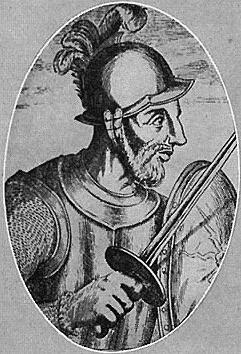
Swashbuckler dashingly
sets out to discover
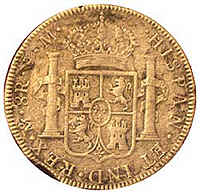
the name of the game:
real of 8
remember Treasure Island?


a merry devil... slim, handsome, and attractive alike to men and women - and also courageous, ruthless, greedy, and exceptionally cruel. (Reminds me of Count Dracula; in The Conquest of Peru Prescott describes Ojeda as belonging in a Cervantes book). His cousin Ojeda, a member of the inquisition, brought him in contact with Juan Rodríguez de Fonseca, archdeacon of Sevilla and member of the consejo real. De Ojeda had already become a favorite of Queen Isabela by walking out on a beam projecting from a 200 feet tower and pirouetting on it, having made sure she was around to watch.
De Ojeda so got the opportunity to accompany Christopher Columbus on his second journey, commanded by "Gianetto" Colombo. Four days after Columbus founded Isabela town in Hispaniola, he sent out a searching party for gold commanded by de Ojeda, who came back in less than two weeks with three heavy gold nuggets.
When the natives collected an army to attack Isabela, the Spaniards attacked first and it was de Ojeda who won the battle by leading a cavalry charge supported by dogs. He persuaded the toughest Indian chief to wear handcuffs and shackles by telling him that, in Spain, this was fashionable jewelry. He then threw him in prison and went out to get the chief's brother-in-law.
Columbus then sent de Ojeda on a second expedition, on which he should do the Indians no harm as the Sovereigns were more interested in their Salvation than their gold. Maybe de Ojeda was less innocent but more knowledgeable about the Sovereigns' true interests: The first thing he did was to cut off the ears of an Indian who had stolen some old clothes and to send his cacique to Isabela jail in manacles.
After relieving another Spaniard, Margarit, from the Indians, this one proceeded to roam the island with some 400 Spaniards, extorting Indians for gold, exhausting their food supplies and carrying off young boys and girls as concubines.
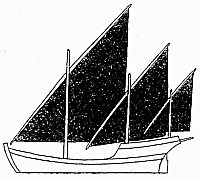
Spanish carvel, 1490
The Lore of Ships, Gothenborg 1975.
When Columbus' monopoly was broken, thanks to de Fonseca's manipulations, de Ojeda was among the first to receive a commission. He took to sea in May 1499 as commander of three ships, with as pilotos Amerigo Vespucci and cartographer Juan de la Cosa. A third famous name is that of Bartoloméo Roldán who had sailed with Columbus' third voyage, which is described in C.S. Forester's The Earthly Paradise (with some weird and, for Forester, rare mistakes). De Ojeda also took along Columbus' journal and chart of the Third Voyage.
This was the first Caribbean expedition de Ojeda commanded, and Vespucci based the notorious (and entertaining) report of his fake "1497" voyage on it.
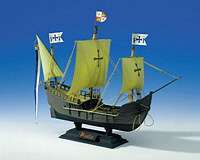

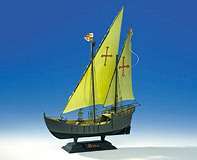
Heller Models of Columbus' ships Niña - Santa Maria - Pinta
They next stopped at Safi in Morocco to sell powder and arms to the Moors. In the Canary islands they paid a visit to Lanzarote to obtain further stores by plunder, but did not succeed in stealing yet another carvel. Talk about "a motley crew".
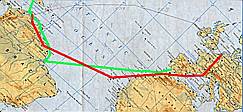
De Ojeda's voyage - green line
Flight of Fokker F-XVIII Snip - red line.
After a fast crossing to the coast of Brazil, which they reached at the equator, they sailed to the Gulf of Paria, which they left through the Boca de Dragón, Dragons Mouth (NW of Trinidad). On to Margarita, which de Ojeda claimed he had really discovered, as Columbus had never set foot on it. This bunch of would-be pirates, going along killing and fighting, tried to rob pearls from the Indians there, without much luck. Though some say he collected a nice bunch of pearls. Nevertheless, the name Linneaus gave to the pearl oyster (really a mussel) is Margarita margaritifera.
They had more success in Naracapana, where they even built a small bergantina to help the natives attack their enemies on a Caribee island. This paid a lot of spoil, but the Indians do not seem to have had any pearls. Tough.
After changing Columbus' name for Las Guardias to Los Frailes they discovered Bonaire and Curaçao, where they landed, probably by the end of June 1499; possibly arriving on July 29, the day of Santa Ana. It was named the Islas de los Gigantes, for some reason. De Ojeda then followed the Venezuelan coast, and on August 9 entered the Lake of Maracaïbo, which gave Venezuela its name (little Venice). There, de Ojeda may have been the first European to have set foot ashore the American continent, never mind the Vikings. He promptly got into another fight with the native Indians. They then crossed from Maracaïbo to Hispañola, where they arrived in September for more trouble, now with Columbus. They finally seem to have taken a shipload of slaves somewhere for the Sovereigns back home as a just-as-good substitute for gold (or Salvation).
The map de Ojeda sketched of this voyage
was the base for the famous 1500
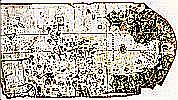
Harvard University
It seems sure that Vespucci and de Ojeda went their different ways somewhere along the Tierra Firma, which is the coast between Paria and Cartagena. All other expedition members seem to agree that it was de Ojeda, not Vespucci, who can claim the discovery of Curaçao island; but (go figure) Vespucci may, after all, still have been an expedition member at that time.
Encyclopedie van de Nederlandse Antillen, Amsterdam 1969, p223, 416
Fraters van Tilburg, De Geschiedenis der Nederlandse Antillen, Willemstad, undated, p9
Samuel Eliot Morison, Christopher Columbus, Mariner, New York 1956
Samuel Eliot Morison, The European Discovery of America - The Southern Voyages, New York-Oxford, 1974
not Alonso de Ojeda, who discovered Curaçao.
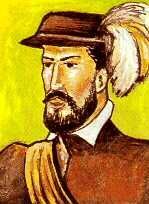 | 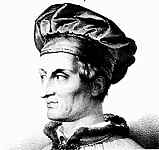 Amerigo Vespucci | 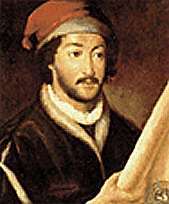 |
| Alonso de Ojeda | fellow voyagers | Juan de la Cosa |
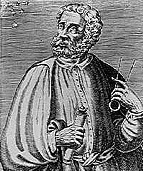 | 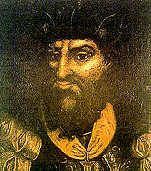 | 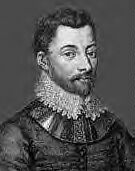 |
| Ferdinand Magellan | Vasco da Gama | Francis Drake |
| Steamship Curaçao | Maps | KLM Fokker F-XVIII Snip |
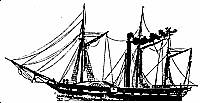
|
 |
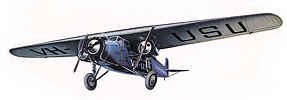 |
| first Atlantic steam crossing, 1826 | the Chart Room | first Trans-Atlantic air mail, 1934 |

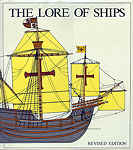    |
The Lore of Ships Not much of a sailor myself, I bought this to understand the Hornblower books better. It's a delight. Large format, good info, beautiful. From tree trunks to nuclear submarines. |
     |
Ships and the Sea Lots of reliable info. Maybe a bit heavy on the English side, but after all, it is in English. I know of no equivalent book in any other language anyway. |
 |
Discovery of America By Columbus biographer Samuel Elliot Morison. As fat and solid as you'd expect. Shown is Part II, the Southern Voyages, but I'd advise reading Part I (North) first. |
SEARCH this site or the Web

copyright notice
all material on this site, except where noted
copyright © by , curaçao
reproduction in any form for any purpose is prohibited
without prior consent in writing